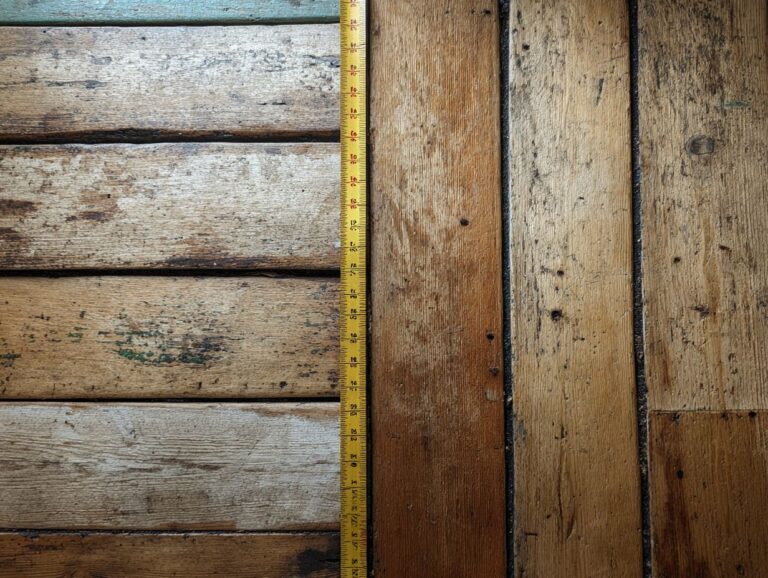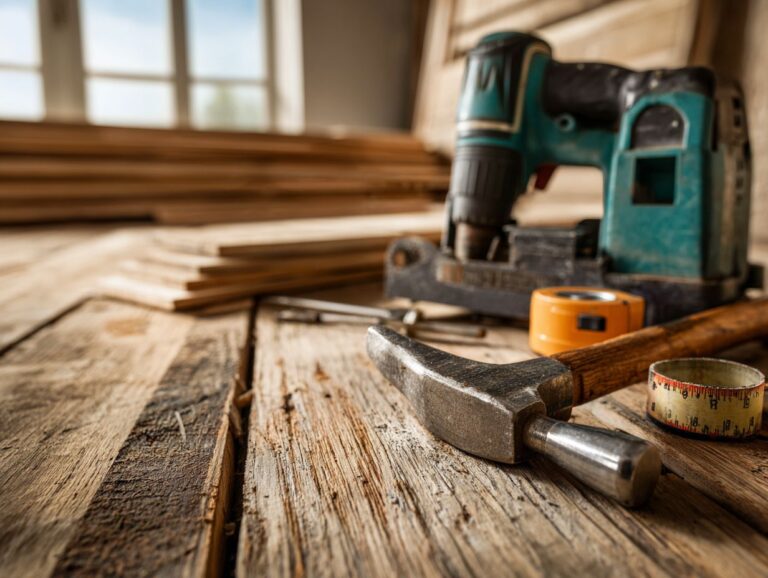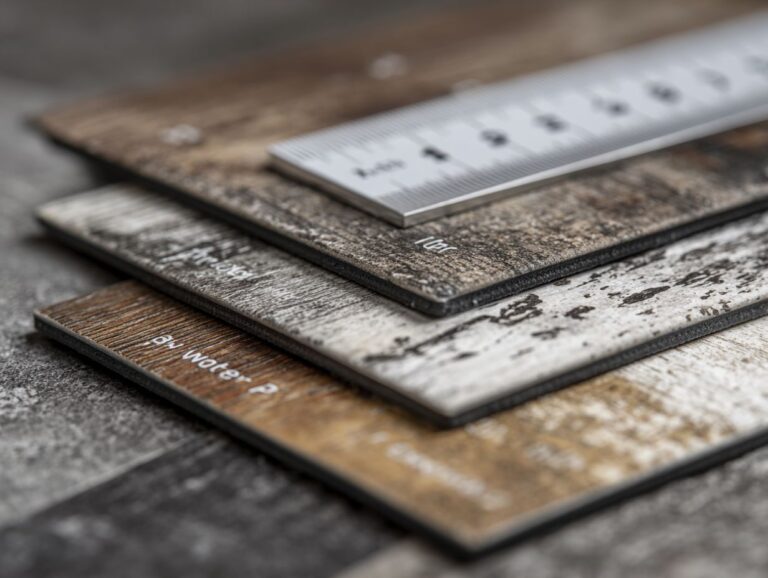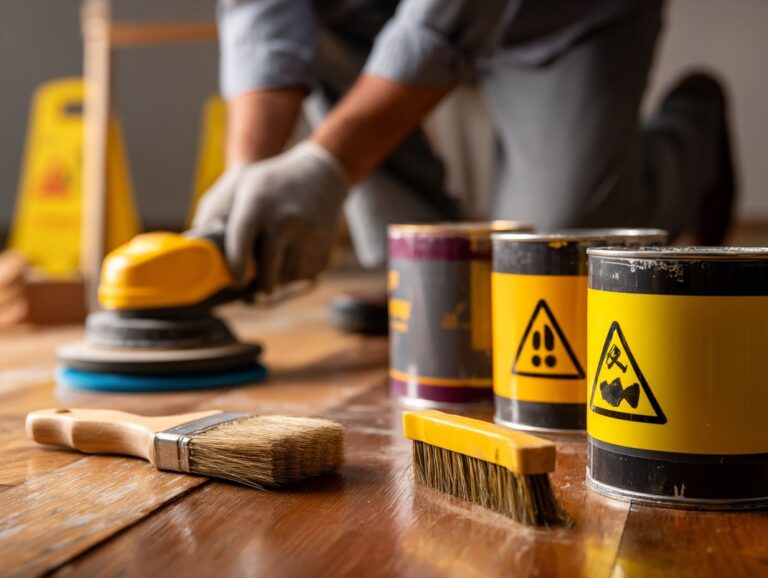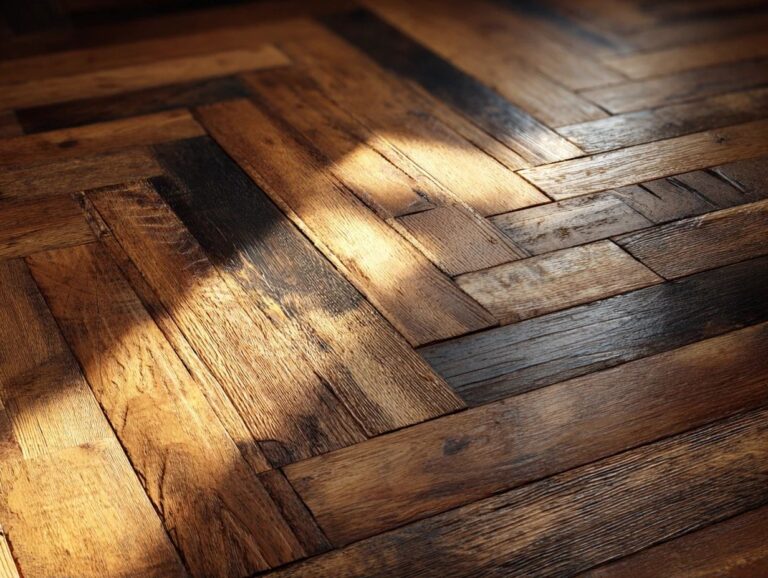True Cost of Cheap Flooring – Long-Term Analysis
When considering flooring options, the allure of cheap materials can be tempting, but what are the true costs? According to Home Advisor and Remodeling Calculator, initial installation might save you money, but the long-term consequences of poor-quality flooring, like hardwood alternatives, can add up quickly. In this article, we examine the hidden costs, durability issues, and maintenance expenses associated with budget flooring, assisting you in making informed decisions for your home.
Key Takeaways:
Contents
- Initial Costs vs. Long-Term Costs
- Durability and Longevity
- Cheap Flooring Durability Statistics
- Environmental Impact
- Health Implications
- Installation Costs
- Market Trends and Consumer Behavior
- Case Studies
- Frequently Asked Questions
- What is the true cost of cheap flooring?
- How does cheap flooring compare to higher quality flooring in the long-term?
- What are the potential long-term costs of cheap flooring?
- What factors should be considered when analyzing the true cost of cheap flooring?
- Is it worth investing in higher quality flooring for long-term cost savings?
- How can I make sure I am calculating the real cost of inexpensive flooring correctly?
Definition of Cheap Flooring
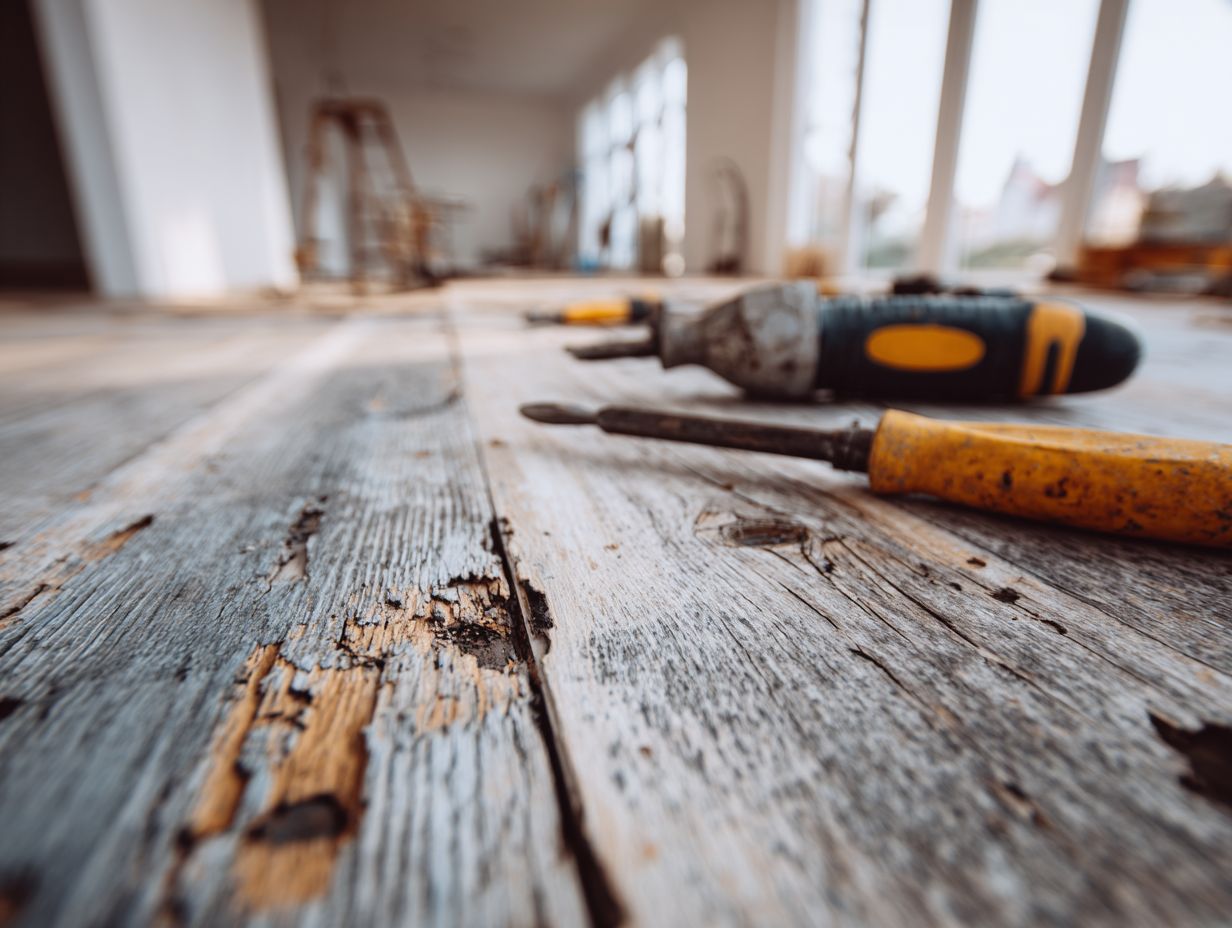
Cheap flooring typically focuses on materials that cost less than $3 per square foot, appealing to budget-conscious homeowners.
Laminate and vinyl are two popular options in this category.
Laminate flooring generally costs about $1 per square foot and resembles hardwood, making it an affordable choice for living rooms and bedrooms.
Vinyl is priced similarly and is very resistant to water, which makes it suitable for kitchens and bathrooms.
Both materials provide a durable finish and easy installation, with many homeowners opting for self-adhesive vinyl tiles to further reduce costs.
Be sure to check for local sales or discounts to maximize savings.
Common Materials Used
Common materials for cheap flooring include laminate, vinyl, and ceramic tile, each offering unique advantages at various price points.
Laminate is an affordable choice, typically costing around $1-$3 per square foot, and it’s known for its easy installation.
Vinyl, typically costing between $2 and $5 per square foot, is water-resistant, which makes it ideal for use in kitchens and bathrooms.
Ceramic tile costs between $1 and $10 per square foot. It comes in various designs and is long-lasting, though you need a professional to install it.
For a mix of quality and budget, luxury vinyl plank is gaining popularity at about $3-$7 per square foot, combining aesthetics with resilience.
Consider your space’s specific needs when selecting the best material.
Initial Costs vs. Long-Term Costs
Knowing the start-up and regular costs is important for picking flooring that fits your budget. If you’re considering a more premium option, our deep dive into hardwood flooring grades provides valuable insights to help you make an informed choice.
Upfront Investment
The upfront investment for flooring materials can range from $1 to $5 per square foot, depending on the type and quality chosen.
Laminate flooring costs between $1 and $2 for each square foot, which makes it an affordable choice for those trying to save money.
Vinyl ranges from $1.50 to $3 per square foot and offers excellent water resistance. Alternatively, ceramic tile, priced at $2 to $5 per square foot, provides durability and varying design options. Hardwood is the most expensive at $3 to $7 per square foot, but its timeless appeal often justifies the cost.
Remember to factor in installation costs, typically an additional $1 to $3 per square foot, which can significantly affect your total investment.
Maintenance Expenses
Maintenance expenses can significantly affect the long-term costs of your flooring, with some materials requiring more care than others.
For instance, laminate flooring is relatively low-maintenance, averaging about $50 per year for cleaning and minor repairs. Compared to other options, hardwood is usually more expensive. It requires refinishing every 7 years, costing about $1.50 per square foot, which adds up to roughly $600 for an average-sized room.
Tile flooring is durable but might require grout sealing or replacement every few years, which costs about $100. When picking flooring, think about both the initial costs and long-term upkeep to keep your budget under control.
Durability and Longevity
Checking how long floors last and how well they hold up is important for homeowners to make sure their money is well spent over time.
Cheap Flooring Durability Statistics
Cheap Flooring Durability Statistics
Durability Details: Comparing Lifespans
Durability Ratings: How Flooring is Evaluated
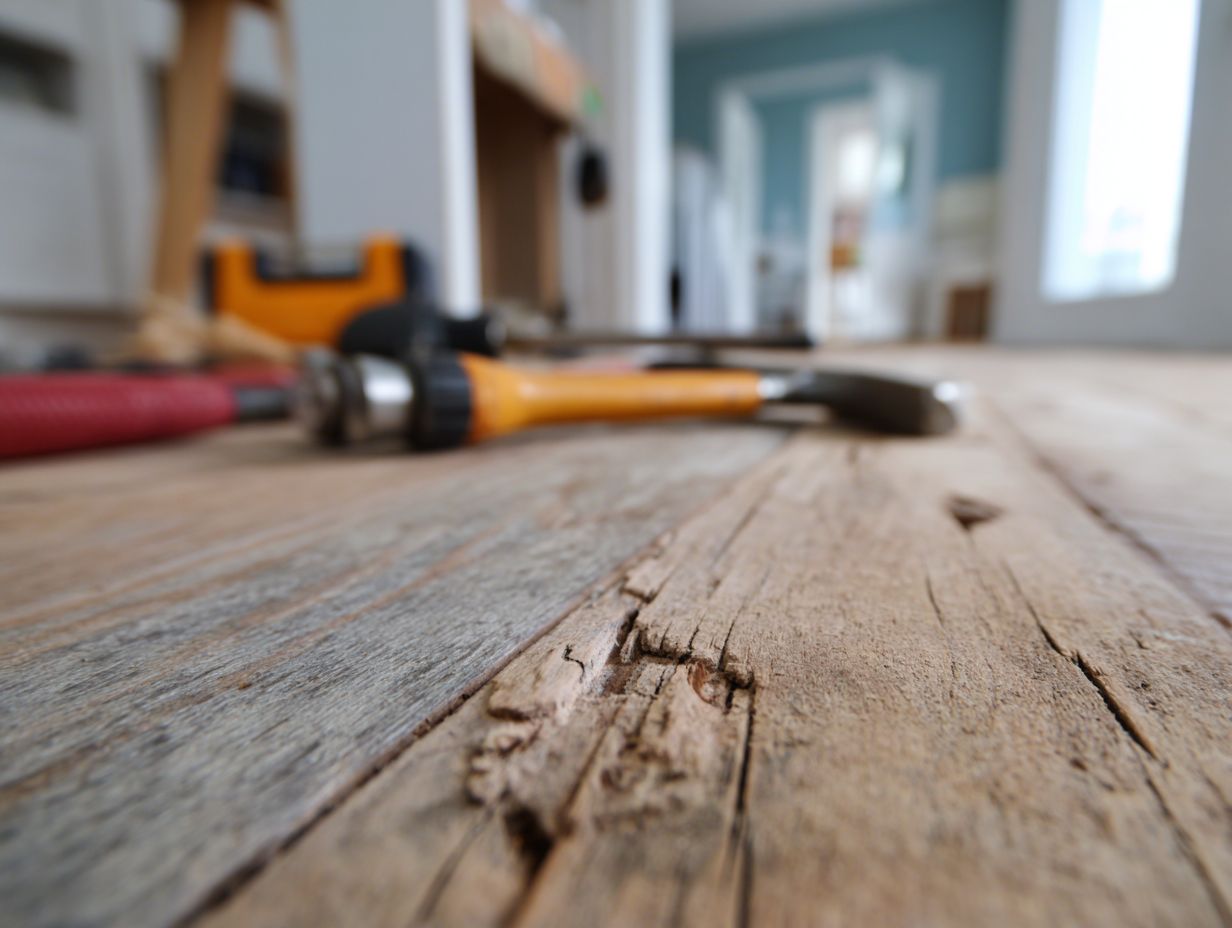
Cheap Flooring Durability Statistics offers important information about how long different types of flooring last and how strong they are, which is important for people looking for affordable and long-lasting flooring for their homes. This data highlights the differences in performance and durability between high-quality and low-cost flooring.
Durability Insights highlight stark contrasts in lifespan; high-quality flooring lasts 30 years, whereas cheap flooring lasts only 10 years. This difference highlights the choice between saving money initially and spending more over time. While inexpensive flooring might appear budget-friendly at first, needing to replace it more often can cancel out these initial savings.
- Flooring Rating Systems: The Carpet AC Rating is rated at 5, indicating excellent resistance to wear in residential settings. Such ratings help consumers determine the suitability of carpet flooring for high-traffic areas without compromising quality.
- Tile PEI Rating is 3, showing moderate durability for residential use. This rating helps in assessing the appropriateness of tile flooring for less demanding environments, balancing cost with adequate performance.
- Hardwood Janka Rating stands at 1500 It is strong and hard enough for home use. This measurement shows how strong hardwood floors are against dents and wear, highlighting their durability.
- Vinyl Wear Layer Thickness measures at 20 mil, indicating strong resistance to scratches and abrasions in residential scenarios. This measure helps consumers evaluate the durability of vinyl flooring, ensuring it meets their needs for resilience against daily wear.
The Cheap Flooring Durability Statistics Information shows the relationship between cost and durability, helping consumers choose flooring that fits their budget and long-lasting needs. Recognizing these metrics aids in selecting flooring that offers the best compromise between affordability and lifespan. By looking at rating systems like AC, PEI, Janka, and wear layer thickness, homeowners can choose the best flooring for their needs based on how they plan to use it and how long they want it to last.
Comparative Lifespans of Flooring Types
On average, different flooring types exhibit varying lifespans, with hardwood lasting 25+ years while laminate may last around 10-15 years.
Along with hardwood and laminate, other options include vinyl, which lasts between 10 to 20 years, and ceramic tile, known for its durability of around 20 years.
To help you decide, consider factors such as price, maintenance, and aesthetics.
For instance, while hardwood offers a warm, classic look, it requires regular maintenance and can be costly. Vinyl is cheap and easy to clean, making it a practical option for busy areas.
Each material’s lifespan also depends on installation quality and environmental conditions.
Impact of Quality on Longevity
Using top-notch flooring materials increases durability, leading to fewer replacements and repairs.
For instance, high-quality vinyl planking can last up to 20 years when well-maintained, while cheaper alternatives may endure only about 10 years.
Regular maintenance, such as cleaning with gentle, pH-neutral solutions and avoiding abrasive tools, can extend the lifespan of your flooring significantly.
Consider selecting materials like hardwood or porcelain tiles, which can further improve durability, especially in high-traffic areas.
When you focus on quality and attention to detail, you make a durable investment that improves the look and usefulness of your home.
Environmental Impact
Looking into how affordable flooring materials affect the environment is important for eco-friendly buyers looking for sustainable options. Understanding the cost implications, as discussed in our Flooring Cost Per Square Foot \u2013 2025 Pricing Guide, can help in making informed decisions.
Sustainability of Cheap Materials
Some cheap flooring materials, like laminate and luxury vinyl plank, can be produced sustainably and certified by organizations like the Forest Stewardship Council.
For an eco-friendly option, consider bamboo flooring which generally costs less than traditional hardwood.
Products with certifications like FloorScore and GreenGuard confirm low levels of volatile organic compounds, leading to better indoor air quality.
Cork flooring is warm and comes from the bark of cork trees, which can be harvested without harming the trees. This makes it a good choice for the environment.
Choosing these certified options helps you save money and support better living conditions.
Waste and Disposal Issues
Disposal of cheap flooring materials poses environmental challenges, particularly for those that release harmful substances during degradation.
Laminate and vinyl flooring are frequent offenders, as they may contain PVC and other chemicals that can be harmful during disposal. To recycle these materials, start by checking with local recycling facilities, many of which accept specific flooring types.
For example, in cities such as San Francisco, you can use services like Recology to throw away waste correctly. Some retailers, such as Home Depot, offer take-back programs for flooring products.
Always verify what materials can be accepted, as guidelines can vary by location.
Health Implications
Knowing the health effects related to flooring materials is important for keeping a safe home environment for families.
Indoor Air Quality Concerns
Certain cheap flooring materials can emit volatile organic compounds (VOCs), negatively impacting indoor air quality in homes.
To improve air quality, consider using low-VOC flooring options. Choose materials that have a FloorScore or GREENGUARD certification, confirming they follow strict emission rules.
For instance, bamboo flooring is an eco-friendly choice, while cork provides natural insulation and is often treated to minimize VOCs. Opting for water-based adhesives instead of solvent-based can further reduce harmful emissions.
These options promote healthier living spaces and support environmental actions, making them practical for people who want to protect the planet.
Potential Toxicity of Materials
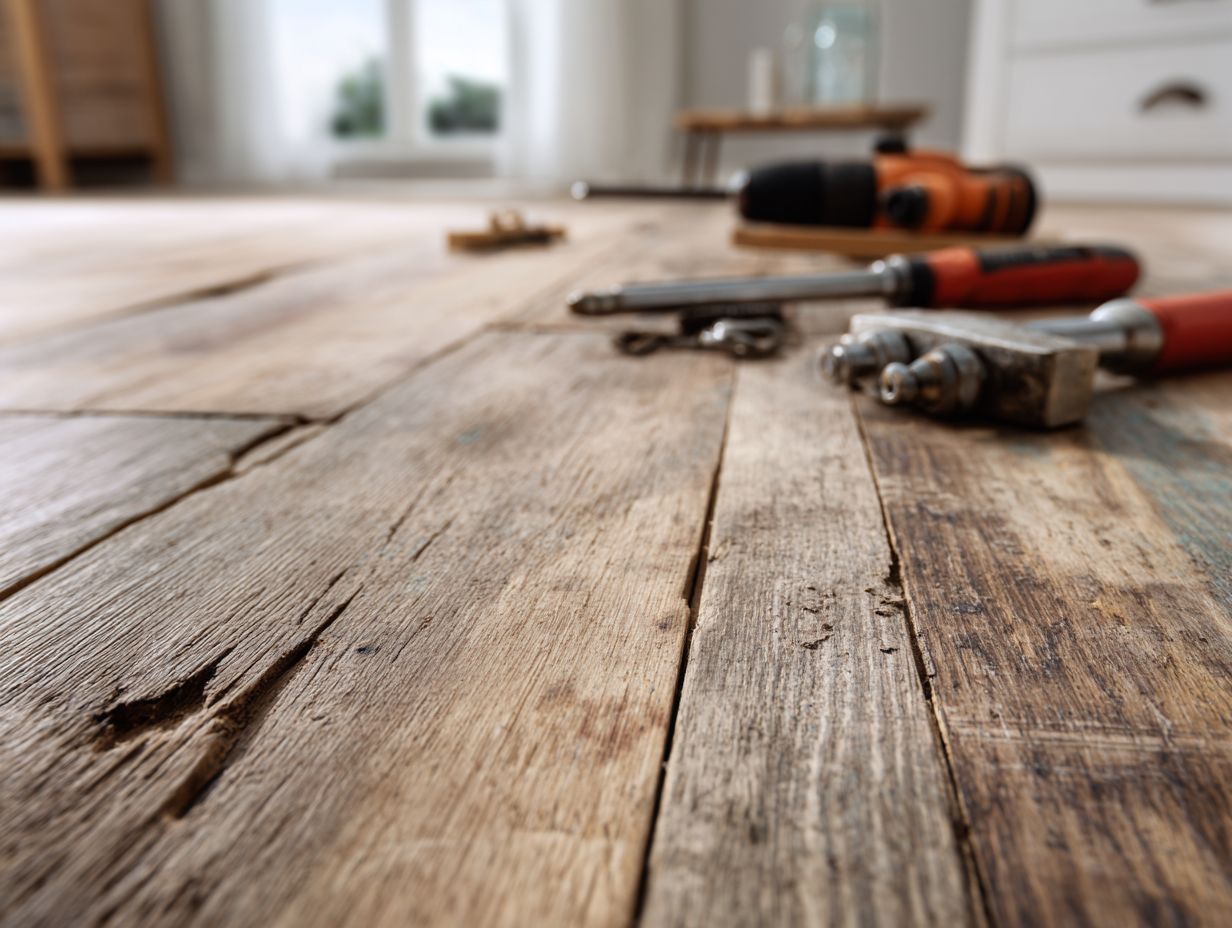
Some cheap flooring options, particularly older materials, may contain toxic substances such as asbestos, posing serious health risks.
To identify potential risks, first check for older vinyl tiles or adhesives that were used prior to 1980, as they are often linked to toxicity.
Look for labels or manufacturer details-if unsure, hire a professional for testing. If asbestos is present, do not sand or disturb the material.
Instead, consider encapsulation, which involves sealing the area to prevent release of fibers, or professional removal to safeguard your health. Always wear protective gear if you’re handling suspect materials.
Installation Costs
The cost of installation can be very different if you do it yourself or if you hire a professional, which can significantly affect your budget.
DIY vs. Professional Installation
DIY installation can save substantial costs, ranging from $1 to $3 per square foot, but may require significant time and skill investment.
Employing an expert for installation usually costs between $3 and $7 for each square foot, offering experienced work and convenience. While handling it on your own can reduce expenses, it takes time to plan, learn, and complete the tasks, which might not be suitable for everyone’s timetable.
If you don’t have much experience, hiring experts can lead to a better outcome and quicker completion, which can help reduce stress. Weigh your budget against your available time and skills to determine the best approach for your flooring project.
Hidden Costs of Poor Installation
Poor installation can lead to hidden costs, such as repairs and replacements, that can exceed original flooring expenses.
For instance, improper leveling can result in gaps or splintering over time, forcing you to replace sections. Moisture damage from insufficient sealing may lead to mold growth or warping, necessitating costly water damage repairs.
If flooring is not laid correctly, it can create uneven surfaces, increasing the risk of slips and falls, which could lead to liability issues.
To prevent these problems, hire a professional for installation and use moisture detection tools like hygrometers to make sure the result is safe and long-lasting.
Market Trends and Consumer Behavior
Recent market trends show that consumers increasingly favor low-cost flooring due to financial reasons and personal taste.
Popularity of Cheap Flooring Options
Cheap flooring options like laminate and luxury vinyl plank have surged in popularity, with laminate sales increasing by 20% in the past year.
This trend reflects consumer preferences for cost-effective solutions without sacrificing aesthetics.
Luxury vinyl plank looks like hardwood and is water-resistant, so it’s great for kitchens and bathrooms.
Popular brands like Shaw and Armstrong offer styles ranging from rustic to modern.
Online platforms like Wayfair or Home Depot provide extensive selections, often featuring customer reviews.
As homeowners focus more on long-lasting and cost-effective choices, looking into these options can result in pleasing and fashionable changes.
Consumer Awareness and Education
As consumers become more educated about flooring options, they increasingly demand transparency regarding costs and sustainability.
This change requires manufacturers to give specific details about the materials in their products.
For instance, companies like Armstrong Flooring have begun to publish Environmental Product Declarations (EPDs), outlining the lifecycle impacts of their goods. Brands such as Mohawk Industries are focusing on eco-friendly options, including recycled materials in their designs.
To stay competitive, retailers can improve their product pages with clear, detailed descriptions and FAQs about sustainability claims. This helps build trust and meet consumer expectations.
Case Studies
Looking at examples can show how low-cost flooring materials work and perform in practical situations.
Residential vs. Commercial Applications
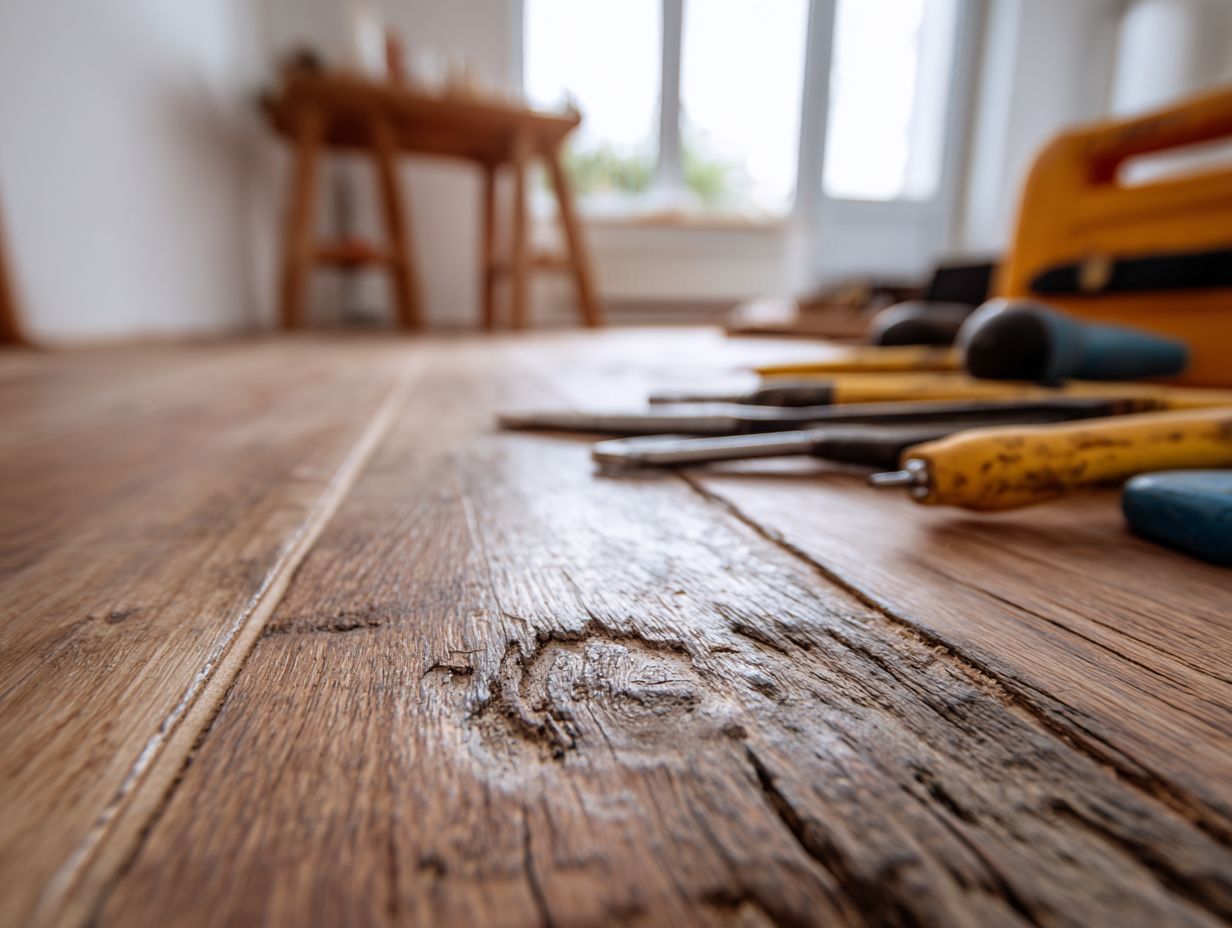
Residential applications often prioritize aesthetic appeal, while commercial settings focus on durability and ease of maintenance.
In residential spaces, laminate flooring is popular due to its affordability and vast selection of designs; for example, brands like Pergo offer styles that mimic hardwood.
Conversely, in commercial environments, vinyl plank flooring stands out for its resilience, with options from Karndean being particularly favored in high-traffic areas. This practicality minimizes maintenance costs over time.
Carpet tiles might be used in offices for a softer look and sound absorption, allowing businesses to balance comfort with durability effectively.
Selecting the appropriate flooring depends on how you plan to use it and your budget.
Long-Term User Experiences
Long-term user experiences can highlight the strengths and weaknesses of cheap flooring options over time.
Testimonials from users often emphasize durability as a significant factor. For instance, one homeowner noted that their laminate flooring installed five years ago still looks new, standing up well against scratches and spills.
Another reported that vinyl plank flooring in a high-traffic area maintained its aesthetics despite frequent cleaning. Users also appreciate the low maintenance of materials like luxury vinyl tile, which generally only requires regular sweeping and occasional mopping.
Some have cautioned that cheaper options may fade or chip over time, especially those exposed to direct sunlight.
Frequently Asked Questions
What is the true cost of cheap flooring?
The real expense of cheap flooring includes the upfront price, as well as ongoing costs for upkeep, repairs, and possibly replacing it later.
How does cheap flooring compare to higher quality flooring in the long-term?
Cheap flooring may have a lower initial cost, but over time, higher quality flooring options typically have lower long-term costs due to their durability and resistance to wear and tear.
What are the potential long-term costs of cheap flooring?
The long-term costs of cheap flooring can include frequent repairs, replacement of damaged sections, and increased energy costs due to poor insulation or ventilation.
What factors should be considered when analyzing the true cost of cheap flooring?
Factors such as installation and maintenance costs, durability, energy efficiency, and potential impact on property value should all be taken into account when determining the true cost of cheap flooring.
Is it worth investing in higher quality flooring for long-term cost savings?
In most cases, it is worth investing in higher quality flooring as it can lead to significant long-term cost savings and a higher return on investment.
How can I make sure I am calculating the real cost of inexpensive flooring correctly?
To figure out the real cost of cheap flooring, you need to look at all aspects and collect quotes from different places to understand the long-term expenses.
